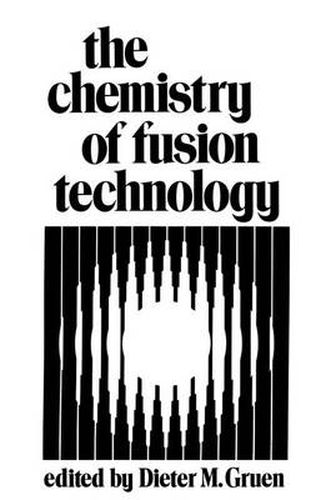Readings Newsletter
Become a Readings Member to make your shopping experience even easier.
Sign in or sign up for free!
You’re not far away from qualifying for FREE standard shipping within Australia
You’ve qualified for FREE standard shipping within Australia
The cart is loading…






This title is printed to order. This book may have been self-published. If so, we cannot guarantee the quality of the content. In the main most books will have gone through the editing process however some may not. We therefore suggest that you be aware of this before ordering this book. If in doubt check either the author or publisher’s details as we are unable to accept any returns unless they are faulty. Please contact us if you have any questions.
Nuclear energy obtained from thermonuclear fusion of light nuclei is a goal to which an increasing world-wide effort is being committed. The demands on energy reserves and resources are continually increasing as ever more coun tries achieve modern industrial status. All projections agree that conventional means of energy production must be supplemented and indeed supplanted by new methods. Only the date at which the transition becomes imperative is subject to debate. The promise of fusion energy ultimately to pro vide a clean, cheap, dependable and potentially inexhaustible energy source augurs well for the future of the human race. If there were illusions at the start of the quest for controlled thermonuclear power that solutions would be easily found, the past two decades have dlspelled them. Unwarranted optimism has been replaced by a realistic recognition of the immense scientific and technological challenges that arise in bringing about practical fusion energy. Broadly speaking, problems can be put into two categories–those having to do with heating the fuel to thermonuclear temperatures at high enough particle densities and for sufficiently long confine ment times to yield a net power return and those having to do with the actual construction of a power producing fusion reactor.
$9.00 standard shipping within Australia
FREE standard shipping within Australia for orders over $100.00
Express & International shipping calculated at checkout
This title is printed to order. This book may have been self-published. If so, we cannot guarantee the quality of the content. In the main most books will have gone through the editing process however some may not. We therefore suggest that you be aware of this before ordering this book. If in doubt check either the author or publisher’s details as we are unable to accept any returns unless they are faulty. Please contact us if you have any questions.
Nuclear energy obtained from thermonuclear fusion of light nuclei is a goal to which an increasing world-wide effort is being committed. The demands on energy reserves and resources are continually increasing as ever more coun tries achieve modern industrial status. All projections agree that conventional means of energy production must be supplemented and indeed supplanted by new methods. Only the date at which the transition becomes imperative is subject to debate. The promise of fusion energy ultimately to pro vide a clean, cheap, dependable and potentially inexhaustible energy source augurs well for the future of the human race. If there were illusions at the start of the quest for controlled thermonuclear power that solutions would be easily found, the past two decades have dlspelled them. Unwarranted optimism has been replaced by a realistic recognition of the immense scientific and technological challenges that arise in bringing about practical fusion energy. Broadly speaking, problems can be put into two categories–those having to do with heating the fuel to thermonuclear temperatures at high enough particle densities and for sufficiently long confine ment times to yield a net power return and those having to do with the actual construction of a power producing fusion reactor.